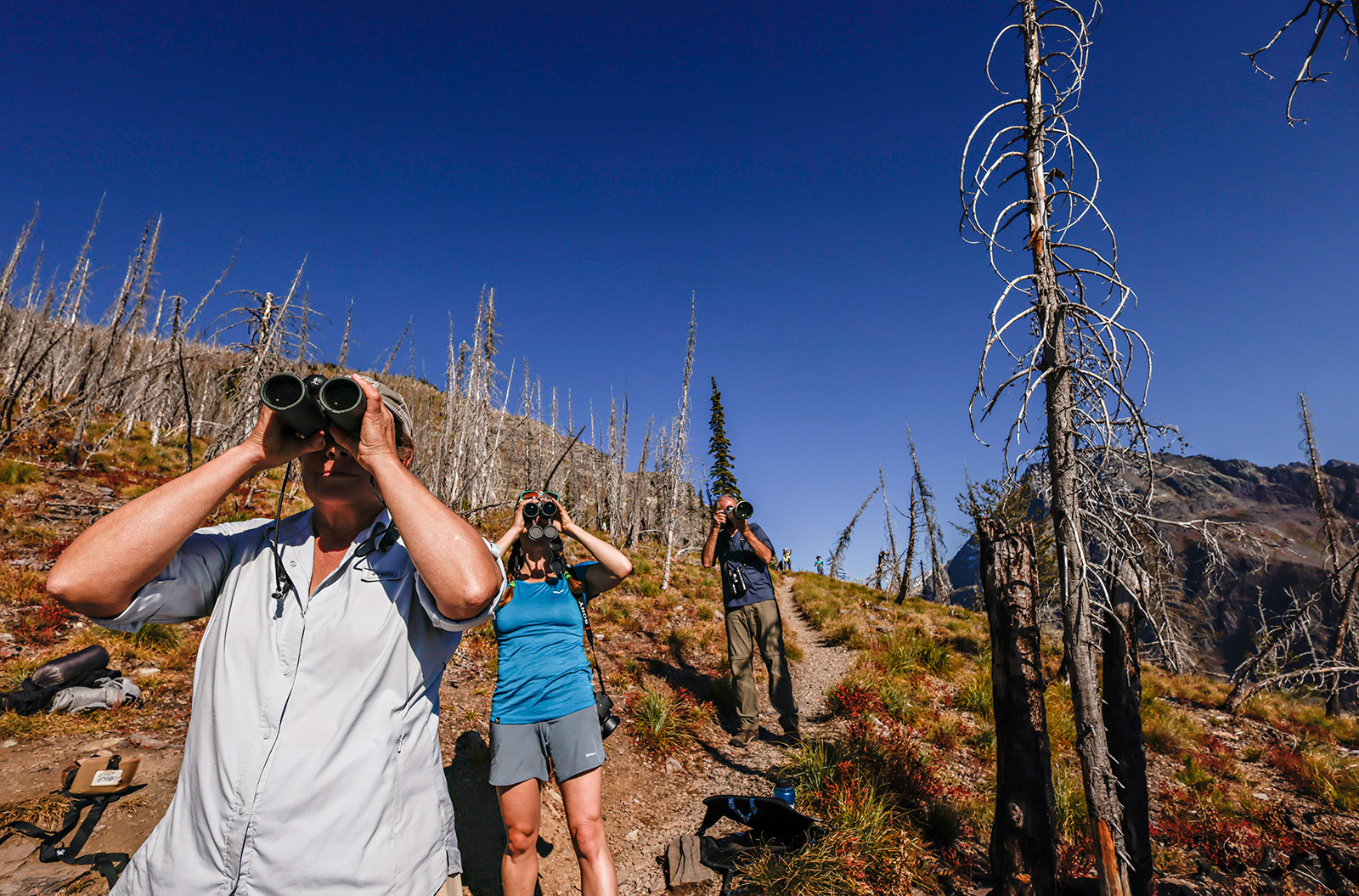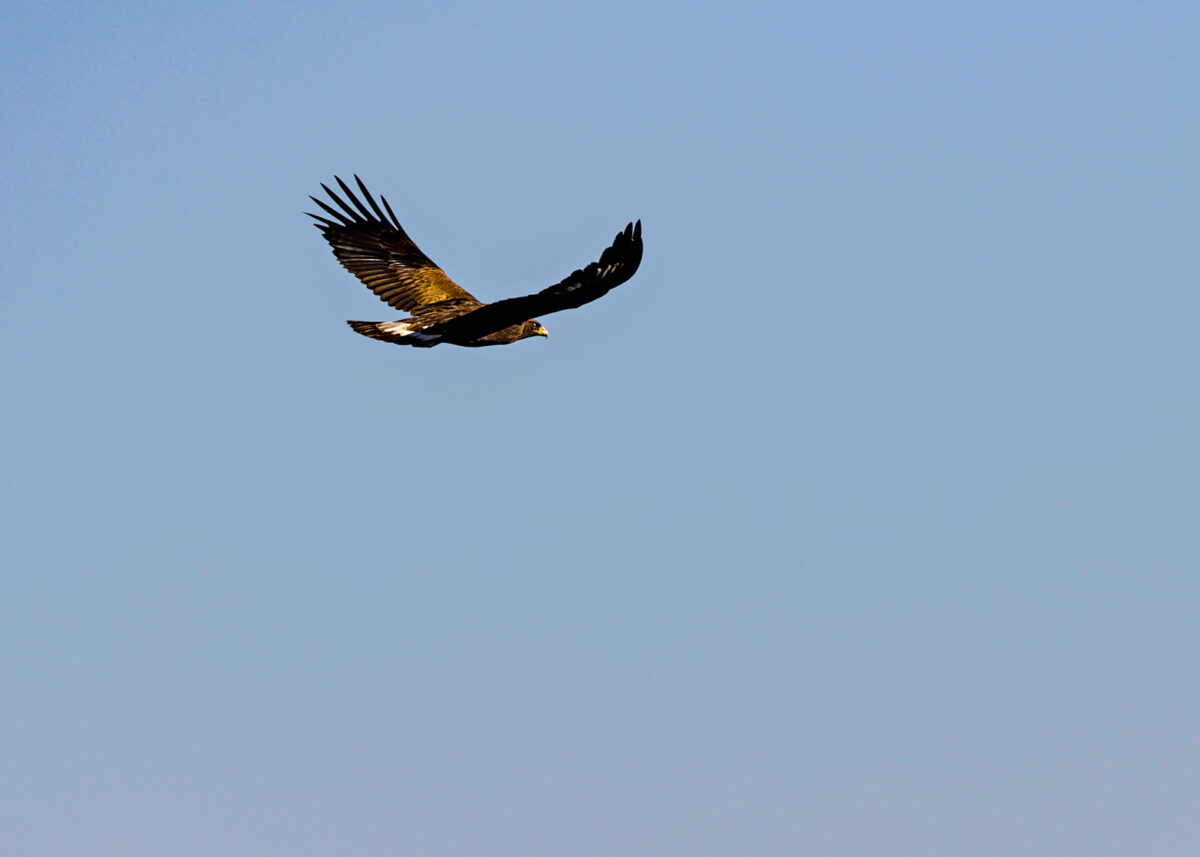Glacier National Park Seeks Volunteers for Annual Hawk Watch Training
The park launched the annual training in response to a decline in golden eagle numbers
By Katie Bartlett
Each fall, golden eagles soar along the crest of the Swan Mountains as they follow their migration route to warmer climates.
But in recent years, the number of birds flying south has declined. As a result, Glacier National Park is hosting its annual Hawk Watch Program on August 26 and September 22. The training gives the public a chance to observe the majestic raptors while supporting population research.
Training will provide an in-depth introduction to raptor ecology, identification, and migration patterns, while teaching volunteers how to count migrating raptors at both the Lake McDonald and Mount Brown Hawk Watch sites.
In the mid-1990s, biologists documented nearly 2,000 golden eagles migrating past Mount Brown annually, but those numbers have since declined. In response, Glacier National Park launched the Raptor Migration Project in 2011 to investigate possible locations for a Hawk Watch site.
Hawk Watch sites are part of an international effort to track long-term raptor population trends. Observers will record data on sex, age, color morph and behavior of raptors, as well as weather and environmental conditions, to better understand how raptors are responding to their environment.

The training session on August 26 will run from 9 am to 1 pm in West Glacier in the Community Building. Once trained, volunteers can hike the nine-mile round trip to a Mount Brown lookout point to collect data.
The September 22 training will be an in-the-field training day taking place from noon to 4 p.m. in Jammer Joe’s parking lot adjacent to Lake McDonald Lodge.
At both training courses, park biologists will share information about the role raptors play in Montana’s ecosystem, the risks they face, and why Glacier started the Mount Brown Hawk Watch Program.
“Most people who come to Glacier are totally into the grizzly bear because it’s the top predator in the terrestrial ecosystem,” GNP wildlife biologist Lisa Bate said in 2023. “But that is also the top predator in terrestrial ecosystems, just in the air. I mean, seriously, that’s the same niche that it fills. And so for any raptor, they’re great indicator of the overall health of our ecosystems.”
Volunteers interested in registering for either or both training days can do so by emailing the Glacier Citizen Science Office at [email protected].